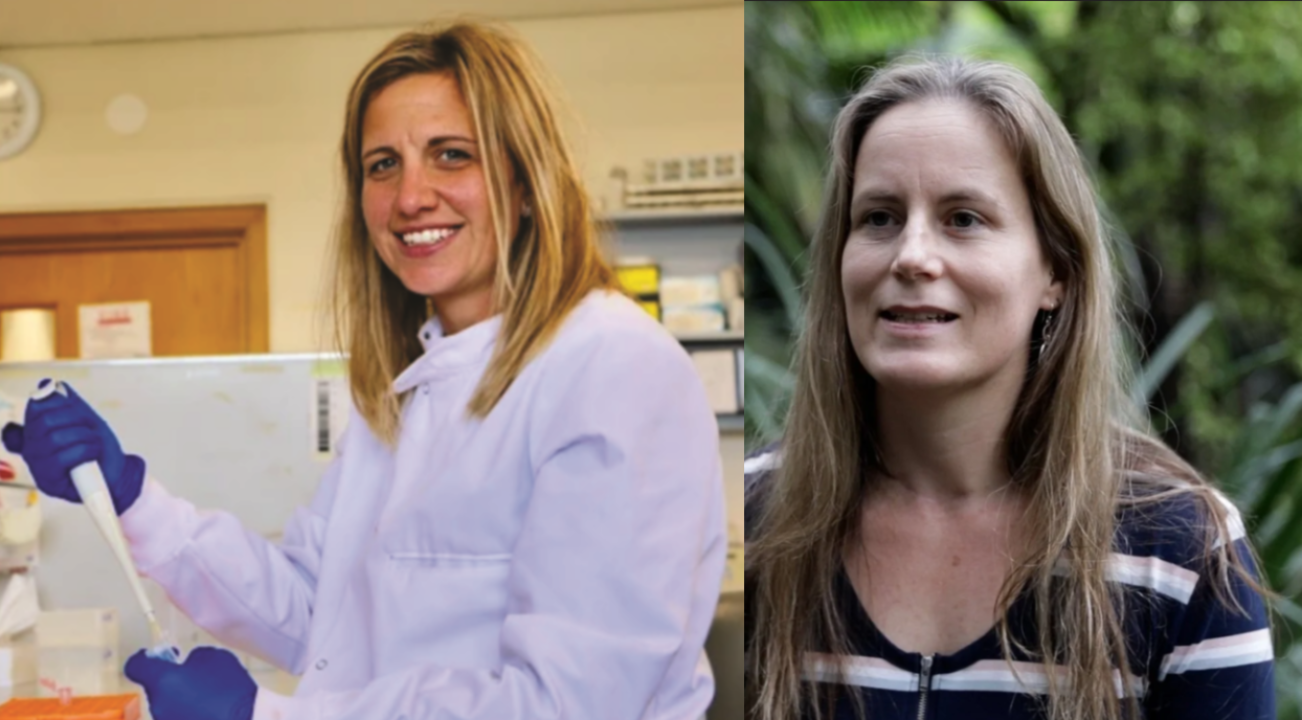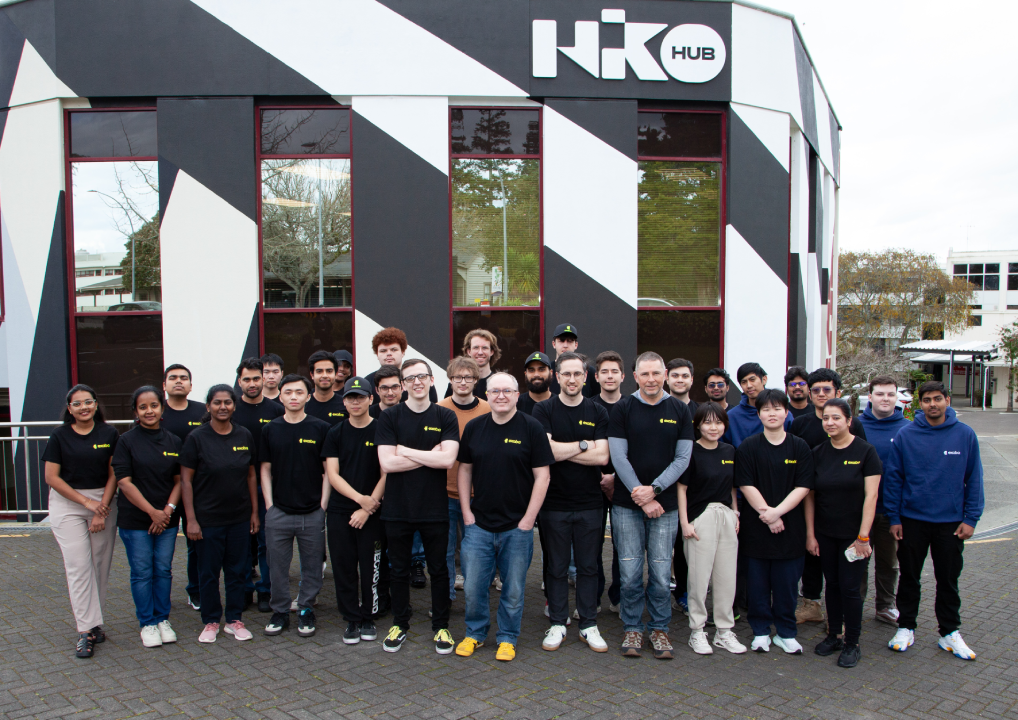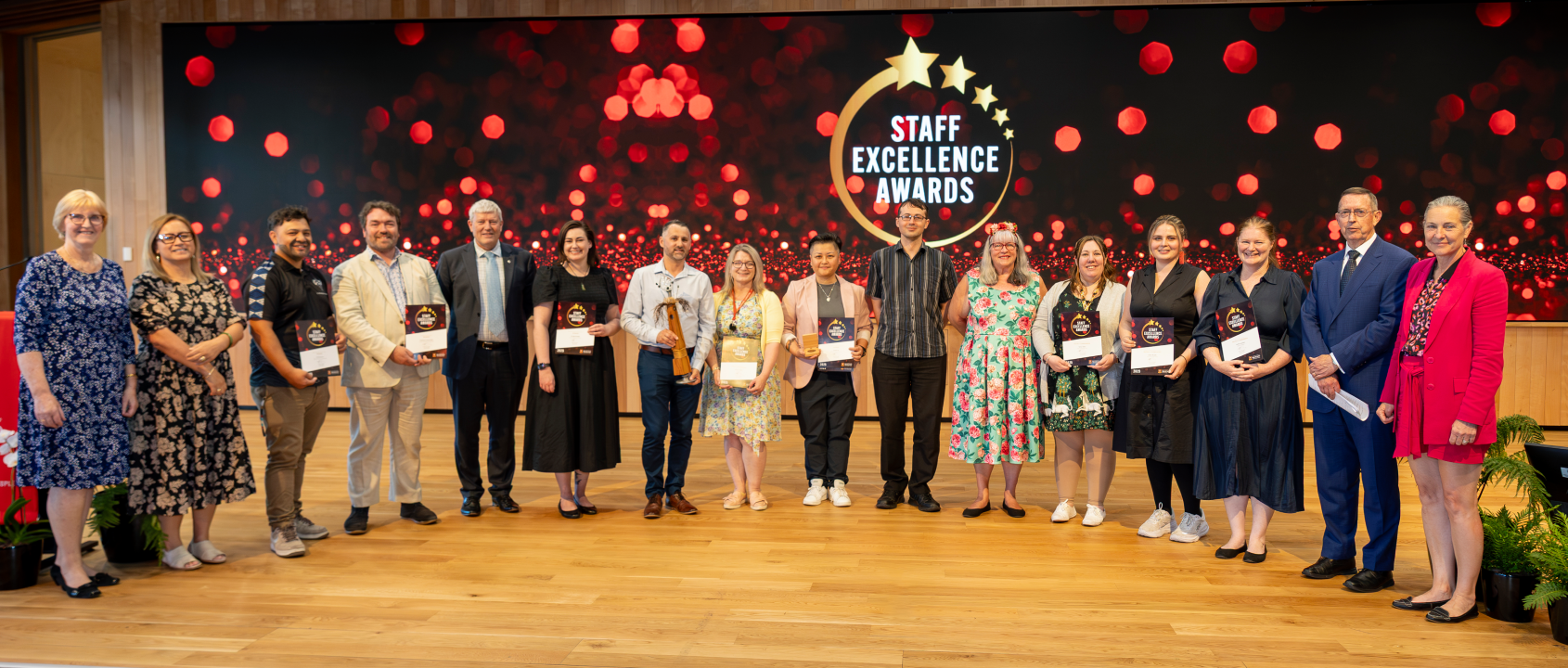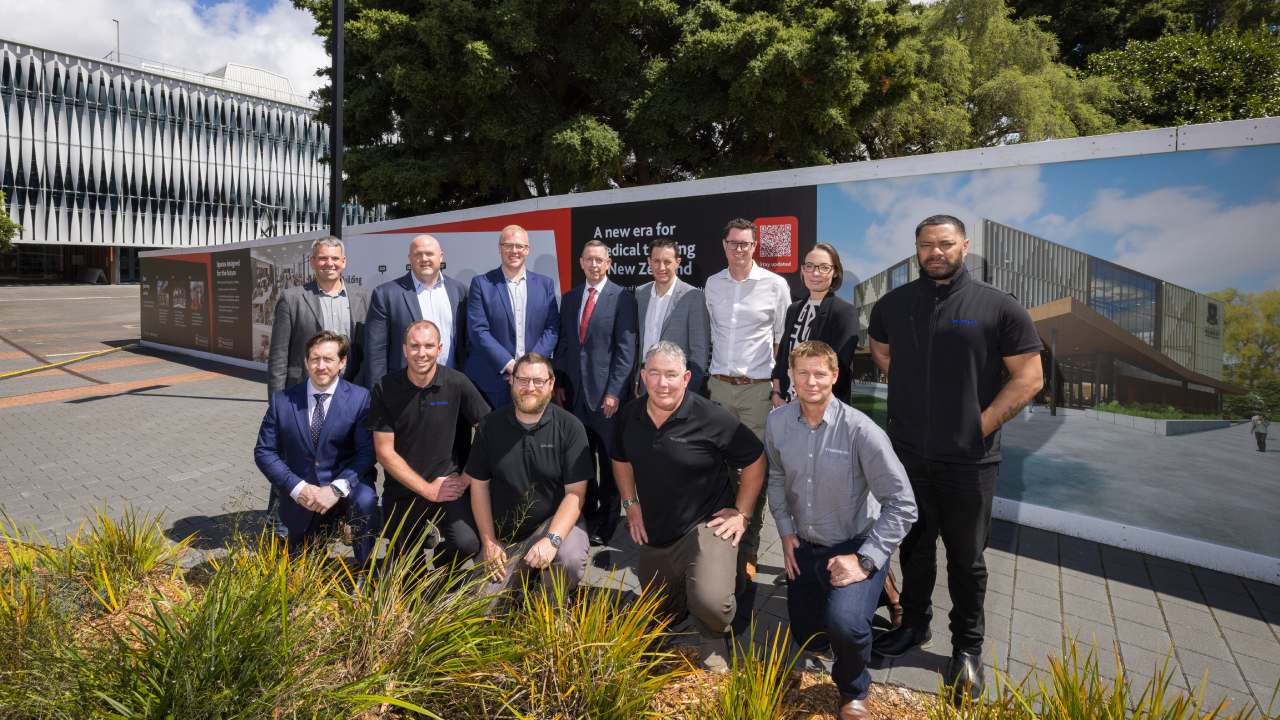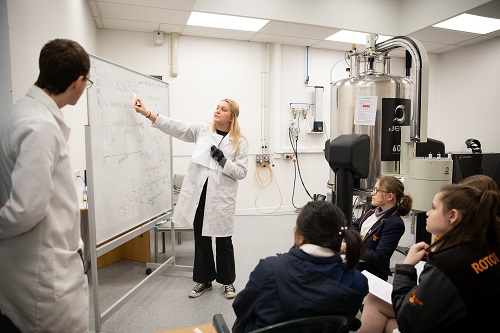
Rototuna High School chemistry students complete calculations before using the new NMR spectrometer.
The new JEOL 600 MHZ Nuclear Magnetic Resonance Spectrometer, or NMR for short, was installed in its new home at the University of Waikato in June with the help of a team of specialist Japanese and Australian engineers. The $1.5 million spectrometer replaces a much older instrument and is a big step forward for the School of Science, says Professor Merilyn Manley-Harris.
“It’s an important instrument in research for understanding the structure of molecules. It’s much higher powered than our old one, capable of working with very tiny samples,” she says.
“The autosampler means we will have the capacity to run it 24/7 if we wanted to. This will save a lot of time and let us do so much more interesting work. We’ve really only just begun to explore its full potential,” she said.
The NMR spectrometer is made up of a strong superconducting magnet kept very cold (approximately minus 269 degrees Celsius) by liquid helium and liquid nitrogen in a giant vacuum flask-like container.
A sample for testing is placed in the NMR’s strong magnetic field and radio waves are used to measure the change in spin of the nuclei of the atoms. Each individual compound produces a unique picture, or NMR spectrum, meaning unknown compounds can be accurately identified.
Professor Manley-Harris says the research team is excited about the potential for collaboration on joint projects with the schools of engineering and health, and with other universities.
“The Universities of Otago, Canterbury and Victoria University of Wellington also have JEOL NMRs and we will be working with them and others to share expertise,” she says.
“It’s pretty simple to use for routine spectroscopy but the really exciting stuff is more complex.”
This model of NMR is ideal for metabolomics – the scientific study of the unique chemical fingerprints that cellular processes leave behind. It is currently being used or has potential application in a number of projects including:
- the search for bioactive compounds in marine species
- honey chemistry
- testing saliva
- reinforcing data for a smart agriculture project
- measuring the purity of synthesised compounds
Professor Manley-Harris says research equipment like the NMR helps earn international respect for the degree qualifications offered by the University.
“If you’re serious about research and teaching chemistry, you’ve got to have this equipment. The American Chemical Society won’t recognise a chemistry degree unless the university granting it has an NMR spectrometer.
“At the University of Waikato, undergraduate chemistry students get the chance to develop hands-on skills with instrumentation and are trained to run their own samples with the NMR and interpret the data,” she says.
Rototuna High School students get hands-on with new $1.5m spectrometer
Students from Rototuna High School were among the first to get hands-on experience with the new $1.5 million nuclear magnetic resonance spectrometer (NMR) when they visited the University’s chemistry labs recently.
Students had to identify two different compounds using the results from the NMR, and they participated in a demonstration of the properties of liquid nitrogen, a key component keeping the superconducting magnet cool in the NMR.
Three University undergraduate chemistry students hosted the visit, and have hosted a number of similar visits from schools around the Waikato region, using resources developed as part of their final year project.
Rototuna High School chemistry teacher Emily Duke says the visit was an opportunity for the high school students studying chemistry to get practical experience in using the equipment.
“We cover the theory of NMR spectroscopy as part of the curriculum, but because the NMR is such an expensive piece of equipment, the students wouldn’t normally get the opportunity to use it.
“Our visit to Waikato University is a great opportunity for them to see and use the equipment and experience first-hand a little bit of the University. Many of them are considering their options for university next year, and the visit provides them with more information about Waikato.”
The University of Waikato will be holding Teachers’ Days on spectroscopy towards the end of the year where they will be given a compound to identify using the NMR. The University will be contacting schools directly with more information, but interested teachers can email Professor Merilyn Manley-Harris.
